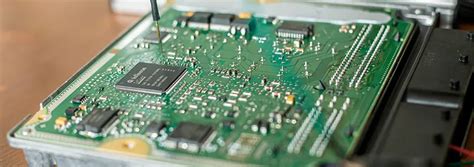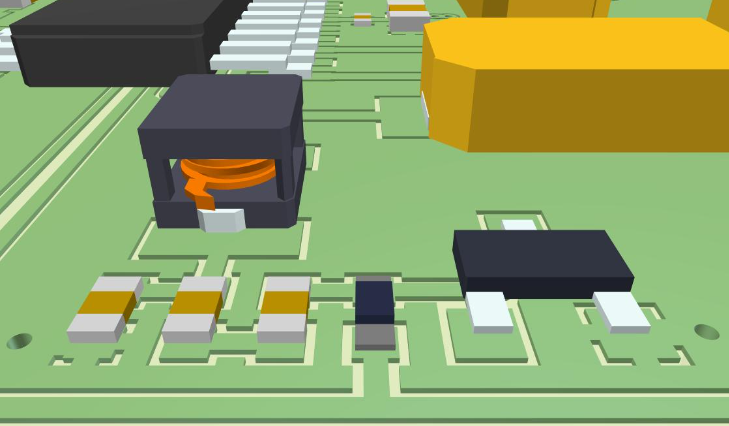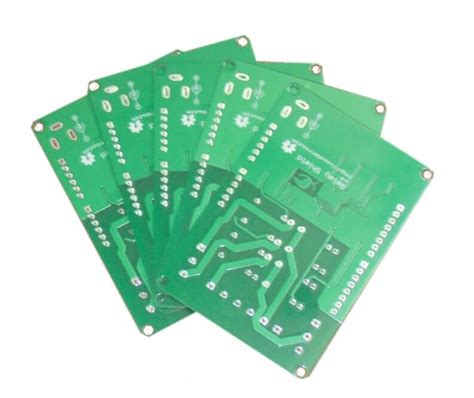Flexible ribbon cable pcb
Advantages Of Using Flexible Ribbon Cable In PCB Design
Flexible ribbon cables, often referred to as flexible flat cables (FFC), have become an integral component in modern printed circuit board (PCB) design, offering a multitude of advantages that enhance both functionality and efficiency. As electronic devices continue to shrink in size while increasing in complexity, the demand for innovative solutions like flexible ribbon cables has surged. These cables are characterized by their flat, ribbon-like structure, which allows for a high degree of flexibility and adaptability in various applications.
One of the primary advantages of using flexible ribbon cables in PCB design is their ability to save space.
Traditional wiring methods can be bulky and cumbersome, often requiring significant room within a device. In contrast, flexible ribbon cables can be bent, twisted, and folded into tight spaces without compromising their integrity or performance. This space-saving attribute is particularly beneficial in compact electronic devices such as smartphones, tablets, and wearable technology, where every millimeter counts.
Moreover, flexible ribbon cables contribute to reducing the overall weight of electronic devices.
By replacing heavier, rigid wiring systems with lightweight ribbon cables, manufacturers can produce lighter products, which is a critical factor in consumer electronics where portability is highly valued. This reduction in weight does not come at the expense of durability; flexible ribbon cables are designed to withstand repeated flexing and bending, making them ideal for applications that require frequent movement or adjustment.
In addition to their physical advantages, flexible ribbon cables offer significant electrical benefits.
They provide excellent electrical performance due to their consistent impedance and reduced electromagnetic interference (EMI). The flat, parallel arrangement of conductors in a ribbon cable minimizes the risk of crosstalk and signal degradation, ensuring reliable data transmission. This is particularly important in high-speed data applications where maintaining signal integrity is crucial.
Furthermore, the use of flexible ribbon cables can lead to cost savings in the manufacturing process.
Their design simplifies assembly and reduces the need for complex wiring harnesses, which can be labor-intensive and prone to errors. The ease of installation and the potential for automated assembly processes can significantly lower production costs and improve manufacturing efficiency. Additionally, the reliability and longevity of flexible ribbon cables can reduce maintenance costs and extend the lifespan of electronic devices.
Another noteworthy advantage is the versatility of flexible ribbon cables in accommodating various design requirements.
They can be customized to meet specific needs, such as varying lengths, conductor spacing, and insulation materials. This adaptability allows engineers to tailor the cables to fit unique design constraints and optimize the performance of the final product.
In conclusion, the integration of flexible ribbon cables in PCB design offers a range of benefits that address the challenges posed by modern electronic devices. Their space-saving, lightweight, and durable nature, combined with superior electrical performance and cost-effectiveness, make them an attractive choice for engineers and manufacturers alike. As technology continues to evolve, the role of flexible ribbon cables in enhancing the design and functionality of electronic devices is likely to expand, further solidifying their importance in the field of electronics.

Key Considerations For Integrating Flexible Ribbon Cables In PCBs
When integrating flexible ribbon cables into printed circuit boards (PCBs), several key considerations must be taken into account to ensure optimal performance and reliability. Flexible ribbon cables, often referred to as flex cables, are essential components in modern electronic devices due to their ability to connect different parts of a system while accommodating movement and space constraints. As technology advances, the demand for compact and efficient electronic designs has increased, making the integration of flexible ribbon cables into PCBs more prevalent. Therefore, understanding the critical factors involved in this process is crucial for engineers and designers.
Firstly, the material selection for flexible ribbon cables is of paramount importance.
These cables are typically made from polyimide or polyester films, which offer excellent flexibility and thermal stability. Polyimide, in particular, is favored for its high-temperature resistance and durability, making it suitable for applications that require repeated flexing. However, the choice of material should align with the specific requirements of the application, including environmental conditions and mechanical stress. By carefully selecting the appropriate material, designers can enhance the longevity and performance of the flexible ribbon cables within the PCB assembly.
In addition to material selection, the design and layout of the flexible ribbon cables must be meticulously planned.
The routing of these cables should minimize stress points and avoid sharp bends, which can lead to mechanical failure over time. Employing a serpentine or looped design can help distribute stress more evenly across the cable, thereby reducing the risk of damage. Furthermore, the integration of strain relief features at connection points can prevent excessive bending and twisting, which are common causes of cable failure. By incorporating these design strategies, engineers can significantly improve the reliability of the flexible ribbon cables in their applications.
Moreover, the electrical characteristics of flexible ribbon cables must be considered during the integration process.
These cables often carry signals between different components of a device, and any impedance mismatches or signal integrity issues can adversely affect performance. To mitigate these risks, designers should ensure that the impedance of the flexible ribbon cable matches that of the connected components. Additionally, shielding techniques may be employed to protect against electromagnetic interference, which can degrade signal quality. By addressing these electrical considerations, the overall functionality and efficiency of the PCB assembly can be enhanced.
Thermal management is another critical aspect when integrating flexible ribbon cables into PCBs.
As electronic devices become more compact, the heat generated by components can pose a significant challenge. Flexible ribbon cables, due to their thin and lightweight nature, can be susceptible to heat damage if not properly managed. Implementing effective thermal management solutions, such as heat sinks or thermal vias, can help dissipate heat away from sensitive areas and maintain the integrity of the cables. By prioritizing thermal management, designers can prevent overheating and ensure the long-term reliability of the flexible ribbon cables.
Finally, the assembly and manufacturing processes must be carefully controlled to avoid damaging the flexible ribbon cables.
During soldering and assembly, excessive heat or mechanical stress can compromise the integrity of the cables. Therefore, employing precise manufacturing techniques and adhering to industry standards is essential. By maintaining strict quality control measures throughout the production process, manufacturers can minimize defects and ensure that the flexible ribbon cables perform as intended.
In conclusion, the integration of flexible ribbon cables into PCBs requires careful consideration of material selection, design and layout, electrical characteristics, thermal management, and manufacturing processes. By addressing these key factors, engineers and designers can optimize the performance and reliability of their electronic devices, meeting the demands of modern technology and consumer expectations.

Innovations In Flexible Ribbon Cable Technology For Modern Electronics
Flexible ribbon cable technology has become an integral component in the evolution of modern electronics, offering a versatile solution for a wide range of applications. As electronic devices continue to shrink in size while increasing in functionality, the demand for innovative interconnect solutions has grown exponentially. Flexible ribbon cables, often referred to as flexible printed circuit boards (PCBs), have emerged as a key player in meeting these demands due to their unique properties and adaptability.
One of the primary advantages of flexible ribbon cables is their ability to conform to complex geometries,
which is particularly beneficial in compact electronic devices where space is at a premium. Unlike traditional rigid PCBs, flexible ribbon cables can bend, twist, and fold, allowing them to fit into tight spaces and around obstacles. This flexibility not only facilitates more efficient use of space but also enhances the overall design possibilities for engineers and designers. Consequently, flexible ribbon cables are increasingly being utilized in a variety of applications, from consumer electronics such as smartphones and tablets to more specialized fields like medical devices and automotive systems.
In addition to their spatial advantages, flexible ribbon cables offer significant improvements in terms of reliability and durability.
The materials used in these cables, typically polyimide or polyester films, provide excellent resistance to heat, chemicals, and moisture. This makes them well-suited for environments where traditional wiring solutions might fail. Furthermore, the inherent flexibility of these cables reduces the risk of mechanical stress and fatigue, which can lead to failure in more rigid systems. As a result, devices that incorporate flexible ribbon cables often enjoy longer lifespans and reduced maintenance requirements.
Moreover, the integration of flexible ribbon cables into electronic systems can lead to enhanced performance.
By minimizing the number of connectors and solder joints required, these cables can reduce signal loss and improve electrical performance. This is particularly important in high-frequency applications where maintaining signal integrity is crucial. Additionally, the lightweight nature of flexible ribbon cables contributes to the overall reduction in device weight, which is a critical factor in portable electronics.
As technology continues to advance, the development of flexible ribbon cable technology is also progressing.
Innovations such as the incorporation of advanced materials and manufacturing techniques are pushing the boundaries of what these cables can achieve. For instance, the use of conductive inks and printed electronics is enabling the creation of even thinner and more flexible circuits. This opens up new possibilities for applications in wearable technology and other emerging fields where traditional wiring solutions are impractical.
Furthermore, the trend towards miniaturization and the Internet of Things (IoT) is driving the need for even more compact and efficient interconnect solutions.
Flexible ribbon cables are well-positioned to meet these challenges, offering a scalable solution that can be tailored to the specific needs of each application. As a result, they are likely to play an increasingly important role in the future of electronics.
In conclusion, flexible ribbon cable technology represents a significant innovation in the field of modern electronics. Its unique combination of flexibility, durability, and performance makes it an ideal solution for a wide range of applications. As the demand for smaller, more efficient devices continues to grow, the role of flexible ribbon cables in shaping the future of electronics is set to expand, offering exciting possibilities for both designers and consumers alike.
Troubleshooting Common Issues With Flexible Ribbon Cable PCBs
Flexible ribbon cable PCBs, often referred to as FPCs, are integral components in modern electronic devices due to their lightweight, compact, and flexible nature. However, like any other electronic component, they can encounter issues that may affect their performance. Understanding these common problems and their solutions is crucial for maintaining the functionality and reliability of devices that utilize these components.
One prevalent issue with flexible ribbon cable PCBs is physical damage, which can occur during handling or installation.
The thin and flexible nature of these cables makes them susceptible to tears, cuts, or excessive bending. To mitigate this, it is essential to handle these cables with care, ensuring that they are not subjected to sharp bends or excessive force. Using protective coverings or guides during installation can also help prevent physical damage.
Another common problem is poor connectivity, which can arise from improper mating of connectors or misalignment.
This issue often manifests as intermittent connections or complete signal loss. To address this, it is important to ensure that connectors are properly aligned and securely fastened. Regular inspection and maintenance can help identify and rectify any misalignment or wear in connectors before they lead to significant connectivity issues.
Signal integrity is another critical aspect that can be compromised in flexible ribbon cable PCBs.
Electromagnetic interference (EMI) and crosstalk between adjacent traces can degrade signal quality, leading to data errors or communication failures. To combat this, designers can employ shielding techniques or use twisted pair configurations to minimize interference. Additionally, maintaining an appropriate distance between signal traces and incorporating ground planes can further enhance signal integrity.
Thermal management is also a significant concern for flexible ribbon cable PCBs, especially in high-power applications.
Excessive heat can lead to material degradation, affecting the cable’s performance and longevity. Implementing effective thermal management strategies, such as using heat sinks or thermal pads, can help dissipate heat and maintain optimal operating temperatures. Moreover, selecting materials with higher thermal resistance can enhance the cable’s ability to withstand elevated temperatures.
Moisture and environmental exposure can also pose challenges for flexible ribbon cable PCBs.
Moisture ingress can lead to corrosion of conductive traces, resulting in electrical failures. To prevent this, it is advisable to use moisture-resistant materials and apply conformal coatings that protect the cable from environmental factors. Ensuring that the device housing is adequately sealed can also help mitigate the risk of moisture-related issues.
Finally, manufacturing defects, such as improper etching or incomplete soldering, can lead to functional failures in flexible ribbon cable PCBs.
Conducting thorough quality control checks during the manufacturing process is essential to identify and rectify such defects. Employing advanced inspection techniques, such as automated optical inspection (AOI) or X-ray inspection, can help detect anomalies that may not be visible to the naked eye.
In conclusion, while flexible ribbon cable PCBs offer numerous advantages in terms of design flexibility and space savings, they are not without their challenges. By understanding common issues such as physical damage, poor connectivity, signal integrity problems, thermal management concerns, environmental exposure, and manufacturing defects, engineers and technicians can implement effective troubleshooting strategies. This proactive approach not only ensures the reliable performance of these components but also extends their operational lifespan, ultimately contributing to the overall success of the electronic devices in which they are employed.







